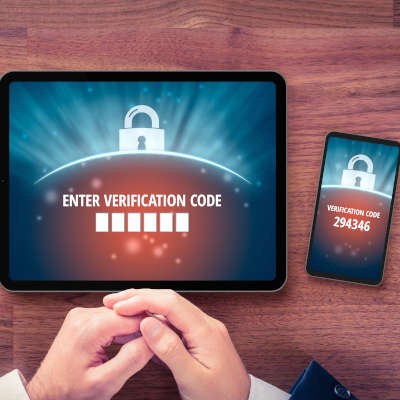Telesys Voice and Data Blog
2-Factor, 2-Furious - How 2FA is Our Last Hope
Two-factor Authentication, also referred to as Multi-Factor Authentication, or 2FA, is typically where you log in to something and have to type in a small code from your mobile device in order to finish the sign-in process. It’s really the only thing protecting your accounts anymore, so it’s critical to use it.
If you haven’t seen or used 2FA by now, it will probably feel like something that Maxwell Smart (from 1965’s Get Smart) would use to get into his fancy car (in the series, Max Smart is a super techy government agent who is big on goofy security gadgets - self destructing messages, shoe phones, and hidden cameras. I digress, but, 2FA makes you feel like you are stepping into the Pentagon with security clearance when you are simply logging in to your Facebook. That is, it feels that way the first time you have to do it. After that, it’s more of a chore.
An important chore, mind you.
How Does 2FA Work?
When you log into a network or an account (like your bank account, your Amazon account, your email, Facebook, etc.) you need to use a password. Most people don’t use different passwords across all of their accounts (although they desperately need to) and because of this, if one organization gets breached, hackers can figure out how to get into your other accounts because they have your one overused password.
Want a good example? If you log into Netflix with your email address and a complex, random password that you use for your Amazon account, and Netflix gets breached, then nothing is stopping hackers from scraping the data stolen from Netflix and trying all the logins on other sites. This is often how individual accounts get compromised.
This happens a lot, and as individuals, we’re all using more and more online accounts these days.
2FA levels the playing field. When you log into an account, you not only need your password, but you need to have your phone on you. Most 2FA works by sending you a text message, or maybe an email with a short code to type in while logging into the site. This is usually enough to prevent letting someone else in, who may have your password.
More secure 2FA methods use an authenticator app, like Google Authenticator, LastPass Authenticator, Duo Authenticator, or one of the others. These are even better because it’s possible a hacker could have control over your email or they might be able to intercept your SMS messages, but if they aren’t physically holding your smartphone they can’t get in.
2FA is becoming a requirement for many industries, and it really should be considered by most businesses today. Enforcing 2FA for your users will ensure that their weak personal password habits don’t put your business or its data at risk.
Want help setting up 2FA across your network? Give Telesys Voice and Data a call at (800) 588-4430.
About the author
Telesys Voice and Data has been serving the Dallas/Fort Worth area since 1994, providing IT Support such as technical helpdesk support, computer support, and consulting to small and medium-sized businesses.
Mobile? Grab this Article!
Tag Cloud


Comments